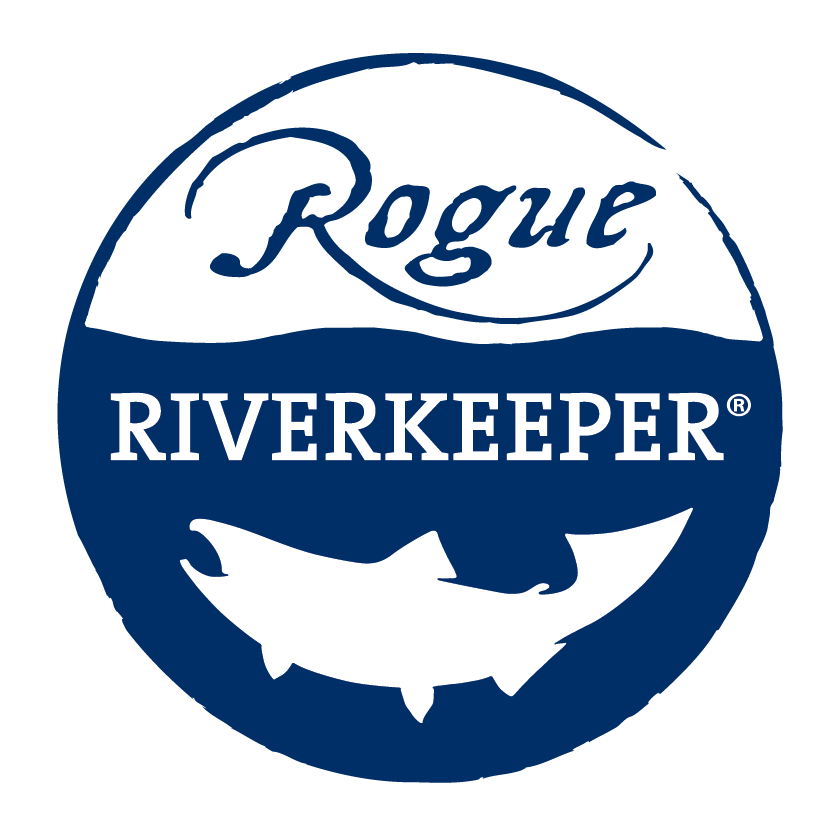Salmon are en route to the Rogue River basin!
Coho salmon. Photo: Unknown
Rogue Riverkeeper believes that protecting and advocating for the habitat of native salmon is important to maintain the economic, social, cultural, and environmental values in the region. Fall is the time that salmon return inland to their natal watersheds from the Pacific Ocean. Of the six species of Pacific salmon, two occur in the Rogue basin: the Chinook salmon (also known as king), Oncorhynchus tshawytscha, and the coho salmon (also known as silver), Oncorhynchus kisutch. All Pacific salmon are anadromous, meaning that these fish are born in freshwater and then follow streams and rivers to make their way to the ocean where they live for a period of time reaching maturity. When the fish are adults, they return to the freshwater streams and rivers where they were born to reproduce the next generation.
On returning to the streams where they were born, the now adult salmon pair up. Females deposit eggs in excavated areas in the river gravels, males fertilize the eggs, and then the adults complete their life cycle, thus rejoining the inland food web and contributing their bodies as nutrients to the surrounding water and land. The Rogue River and its tributaries support some of the largest salmon populations in Oregon. In addition to salmon, other anadromous fish in the Rogue include steelhead trout, Oncorhynchus mykiss, the anadromous form of rainbow trout, Pacific lamprey, Entosphenus tridentatus, and green sturgeon, Acipenser medirostris and white sturgeon Acipenser
transmontanus.
Spawning salmon in Bear Creek. Photo: Maria Fernandez, Still Mountain Studios
Spawning Chinook salmon occur in many Rogue basin locations in October. Look for them in areas of moving water with gravel- to cobble-sized substrate. Middle Rogue tributaries like Bear Creek flowing through Ashland, Talent, Phoenix, Medford and Central Point often have Chinook spawning through the end of October into the beginning of November. In recent years, the expanded range of fall Chinook in Bear Creek all the way up to Ashland is one of the success stories for restoration in this watershed.
After Chinook start the fish spawning cycle in Bear Creek, other fish species spawn, including coho salmon, summer steelhead, cutthroat trout, winter steelhead, Klamath small-scale suckers, and Pacific lamprey spawning in the spring. As stream flows get larger and fall rains progress, it is harder to see these fish during spawning, but if you are in an area with suitable spawning habitat, you just might catch a view.
Salmon viewing hike along Bear Creek. Photo: Maria Fernandez, Still Mountain Studios
Chinook salmon are the first salmon to return for spawning and are not as abundant as some of the other species of salmon, but can grow to a body size larger than any other Pacific salmon. Coho salmon spawning begins after Chinook spawning. These smaller fish can swim higher upstream in streams to spawn and in the Rogue, coho are listed as threatened under the Endangered Species Act.
Rogue Riverkeeper works to protect and restore clean water so that native fish populations can continue to not only survive but thrive in the region. Every fall, we host salmon viewing events to see these miraculous fish in their journeys. We invite you to join us for one of these upcoming events so you can experience the wonder of these incredible creatures for yourself. Our salmon viewing events are family friendly and will include educational background about the salmon in the Rogue basin and our efforts to defend their habitats.




